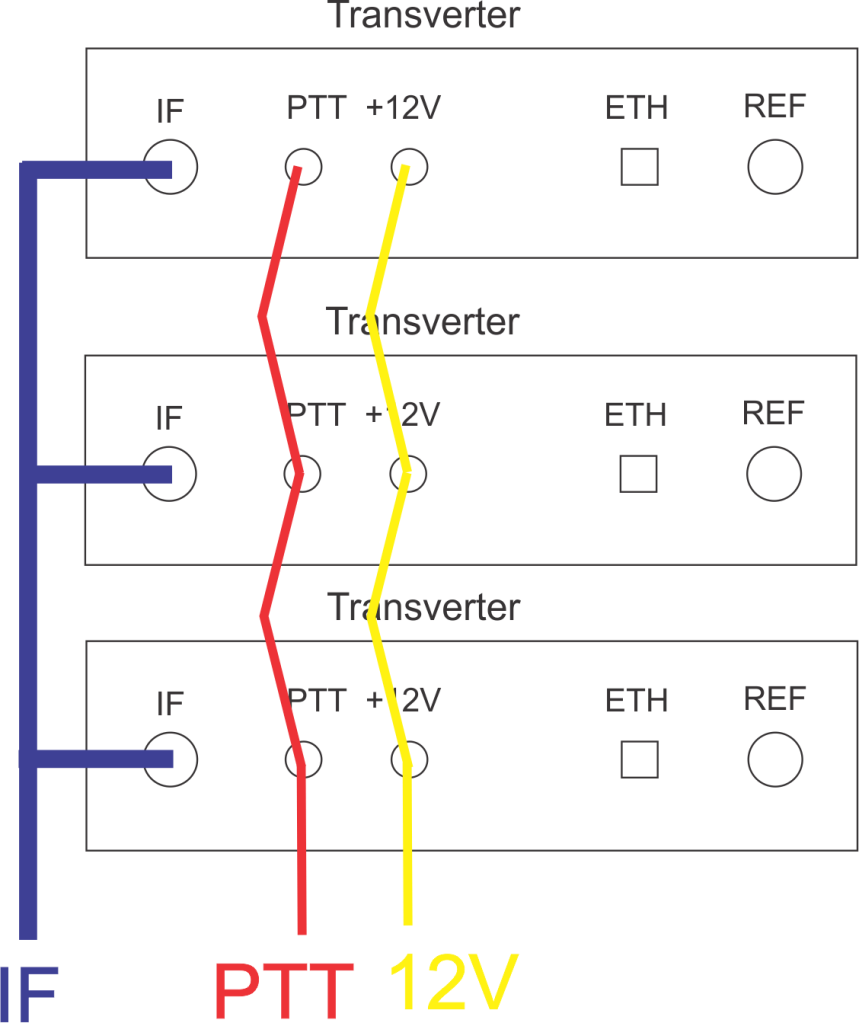I like operating on the VHF and UHF bands those few openings we have here in the north. With my new Flex radio, I decided that the time was in for designing a whole section of transverters to cover the bands 70MHz-1296MHz.
The criteria for the transverters should be that they should be “State of the art”, with preformance that are such that the HF transceiver used as the driver will be the limiting factor. Noise figures in the sub 3dB range and power around 20W, should be suitable for driving the power amplifiers.
The transverters will all be selected by the radio, via the ethernet connection in the transverter. When the transverter has ethernet connection, it connects to the transceiver and subscribes to status packages that tell somthing about what frequency the transceiver listens to. If this frequency equals the operating frequency of the transverter, then the transverter is enabled and the transverter is connected into the IF bus, and the PTT from transceiver is enabled.

The IF bus has to mechanicaly disconnect from the IF bus when the transverter is not in use. This is done so that the input attenuators in the transverters not in use does not load down the bus line, and allows this to function as a RF selected bus. 10MHz frequency reference goes from a distribution amplifier to each of the transverters and ethernet goes from each transverter to a ethernet switch.
The ideal approach would be if the radio had one connection for each transverter, and a SCU (that means 15 connections for the setup here), so some switching is needed. The downside to the current approach is that its going to be impossible to transmit on one band while receiving on another. So for now, satelite operations are going to require some creativity.
